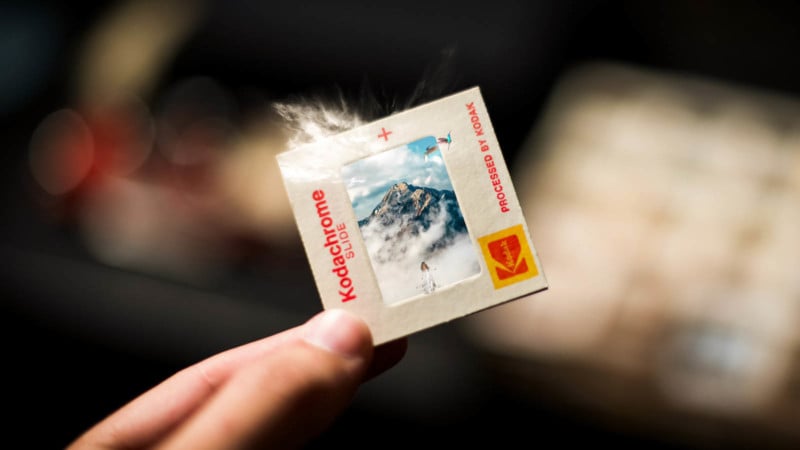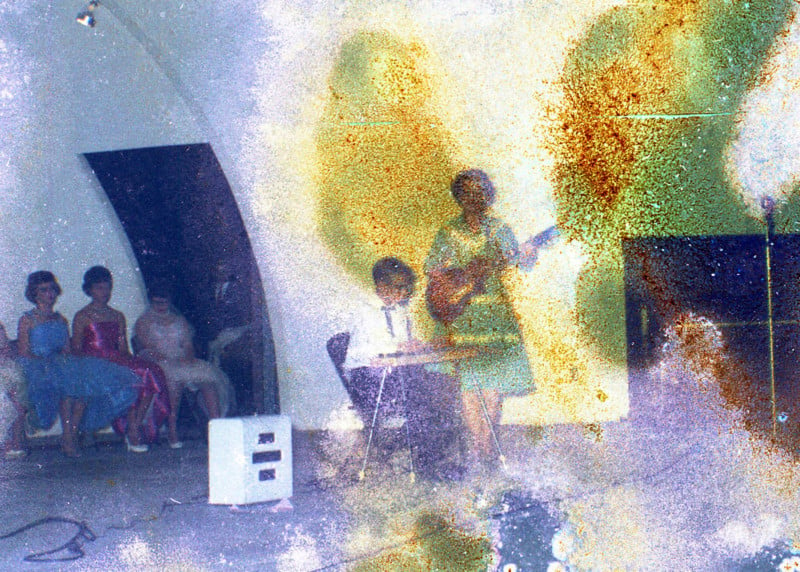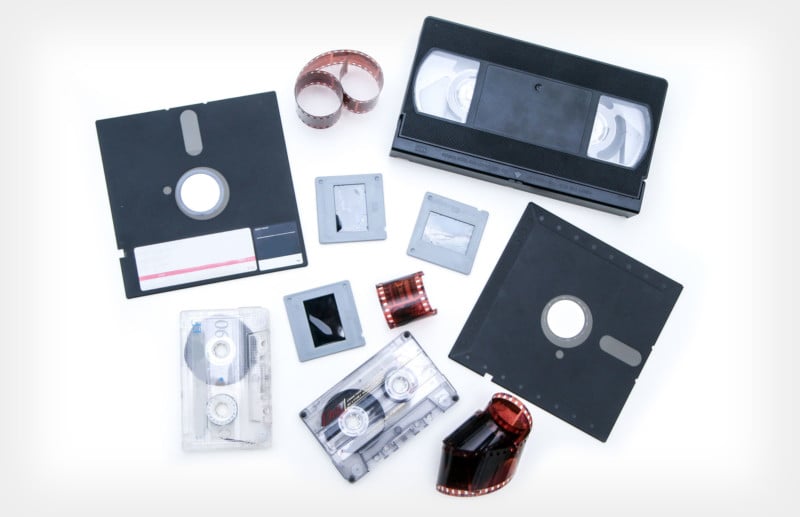How Long Do Photographs Last?
![]()
How long do photographs last? The answer to that question is not as simple as we might think. There are many variables such as the process used, environmental issues, as well as at what point do we consider the photograph unusable?
We need to decide how much degradation of the image is acceptable. If we can see some fading after 50 years is that okay? Can we assume that a print that is almost unrecognizable with much detail lost after 25 years is not okay?
Some color processes claim that the images are “long-lasting” and then suggest that they will last up to 20-25 years. A married couple getting out their wedding album on their 25th or 50th Anniversary to relive the memories of that special day would not find a 25-year life for cherished photographs acceptable.
B&W Photos Can Live Hundreds of Years
Almost all black and white processes are stable and relatively permanent over the long term. Variables such as the quality of the paper, if the prints were properly fixed and washed, as well storage or display conditions can greatly affect the life expectancy of the photographs. It has been proven that properly processed black and white prints on high-quality acid-free paper can last hundreds of years.
The real danger then becomes external damage from handling or environmental issues such as damage from glues, poor storage containers, or even insects or rodents.

Color Photos Usually Have Shorter Lifespans
Most color processes, on the other hand, are unstable because of the use of dyes that will fade, usually at different rates. For example, if the blue layer fades faster than the green or red the photos will become either greenish or reddish after just a few years. This is the most common problem with the chromogenic films and paper commonly used from the 1950s through the 1990s.
One big exception is Kodachrome slide film. Kodachrome film was introduced in 1936 and many slides from the period immediately before World War II still exist in the same condition as when they were first made. Usually dust, scratches, fingerprints, or other physical damage is the only problem with Kodachrome slides.

“Kodachrome’s photo durability can last over a century if stored in a dark, cool, and safe environment,” writes Kodak Digitizing. “The yellow dye in Kodachrome film is considered the least stable, and even this dye only witnesses a 20% loss of dye after 185 years.
“But the long-lasting effects of Kodachrome slides come with a caveat. If exposed to bright light (such as a projector), Kodachrome slides and photographs are inferior to other film brands and will see color fades within one hour.”
Other transparency processes are not as stable. Ektachrome, Agfachrome, and others can be faded to the point where they need considerable color correction after as few as 25 years.

Research Into Photo Lifespans
Wilhelm Imaging Research does extensive research and testing of various photographic processes and materials and publishes data on permeance and conservation issues. They first reported on the relatively short life expectancy of chromogenic processes in the 1990s. In other studies, they have found that inkjet prints using printers such as Epson SureColor series and Epson Signature Series paper typically last from around 100 years to over 300 years depending upon storage conditions.
For example, according to Wilhelm, Epson Ultra-smooth Fine Art Paper when printed with an Epson SureColor P7570 will be fade resistant for over 400 years when stored in the dark at 73 degrees and 50% humidity. Wilhelm publishes charts of the various types of printers and papers, as well as a downloadable book on print preservation.
Digital Photos Have Different Risks
Digital files do not degrade or fade over time and will, if backed up properly, last indefinitely. The most likely problem with digital images is that they will be lost due to technical issues such as a hard drive crashing, a smartphone lost or damaged, or the online storage service going out of business.
Another issue with digital files is the format or the storage media becoming obsolete. Some early image file formats have fallen out of favor and can no longer be opened with current software. For example, Kodak Picture CD PCD files, which were in use from 1990 to 2000, require special software or plugins that may or may not be available or compatible with current Windows or macOS systems.
If our most precious photos from 1998 are on a floppy disk, we might be in trouble. Making sure our photographs are in a format and on media that is readable is an ongoing cause for concern. Only time will tell which data storage devices will be useable in 25 years. The best practice is to keep copying all of our files to the newest and best media and saving the most important in several locations.

How to Store Photographs
This brings us to the question of the best way to store our physical photographs. There are a number of general tips and best practices for storing photos in a way that ensures a maximum lifespan.
Store Photos in Comfortable Places
Whether we are dealing with antiques, musical instruments, artwork, or photographs, the general rule is that if we are comfortable, they will be also. Don’t leave valuable prints anywhere you wouldn’t want to be yourself. That includes hot attics, damp basements, or any place that is either hot or cold. Normal room temperature and normal humidity are ideal.
Avoid Locations Exposed to Sunlight
Photographic prints do not like to be in direct sunlight very long either. Even the best photos can quickly fade if exposed to bright sun for an extended period of time. This is easy to see if you walk by a store window on a sunny street. Just about anything that has been in the window for more than a few days will already be starting to fade. Avoid hanging photographs or other artwork where they will be in direct sunlight. This is the reason the rooms in most museums are fairly dark and do not allow flash photography.
Pay Attention to the Immediate Environment
Another factor affecting the life of photographs is their immediate environment. For example, the glue from envelopes can cause stains. The acid in newsprint or masking tape can cause serious damage. A big problem is photo albums that have vinyl pages or adhesives that can damage photographs in a relatively short period of time. Even low-quality mat board used in picture framing can damage photographs in a matter of a few years.
Best Practices for Long-Term Storage
The solution is to use acid-free or archival materials in framing or making photo albums. The cost will be more, but the savings in not having to have the prints restored years later will be worth it.
UV protective glass as well as UV sprays are often sold as a protector against the harmful damage of sunlight. Think of these things as a type of sunscreen that you might rub on your skin when going to the beach. Protective glass can’t hurt and might help, but it is not going to be a perfect solution. Broken glass in a frame almost always damages the picture that it is designed to protect. Sprays may help, but in some situations, might be worse than nothing if it not applied correctly.
The most long-lasting method for preserving photographs or just about any type of document is ink on paper. If the highest quality paper such as 100% cotton or acid-free paper is used and printed with a high-quality ink-jet printer that uses permanent pigment inks, the photographs should last several hundred years, especially if kept from direct sunlight and stored in moderate temperature and humidity conditions.
The Importance of Proper Storage
With so much importance given to creating photos and videos in this digital age, many people may not consider whether their physical or digital photos are properly stored for years, decades, or centuries to come.
Taking the time to ensure that your photos are properly stored, however, will give you peace of mind in knowing that your memories are safe from being lost to decay or data loss.
Image credits: Stock photos from Depositphotos